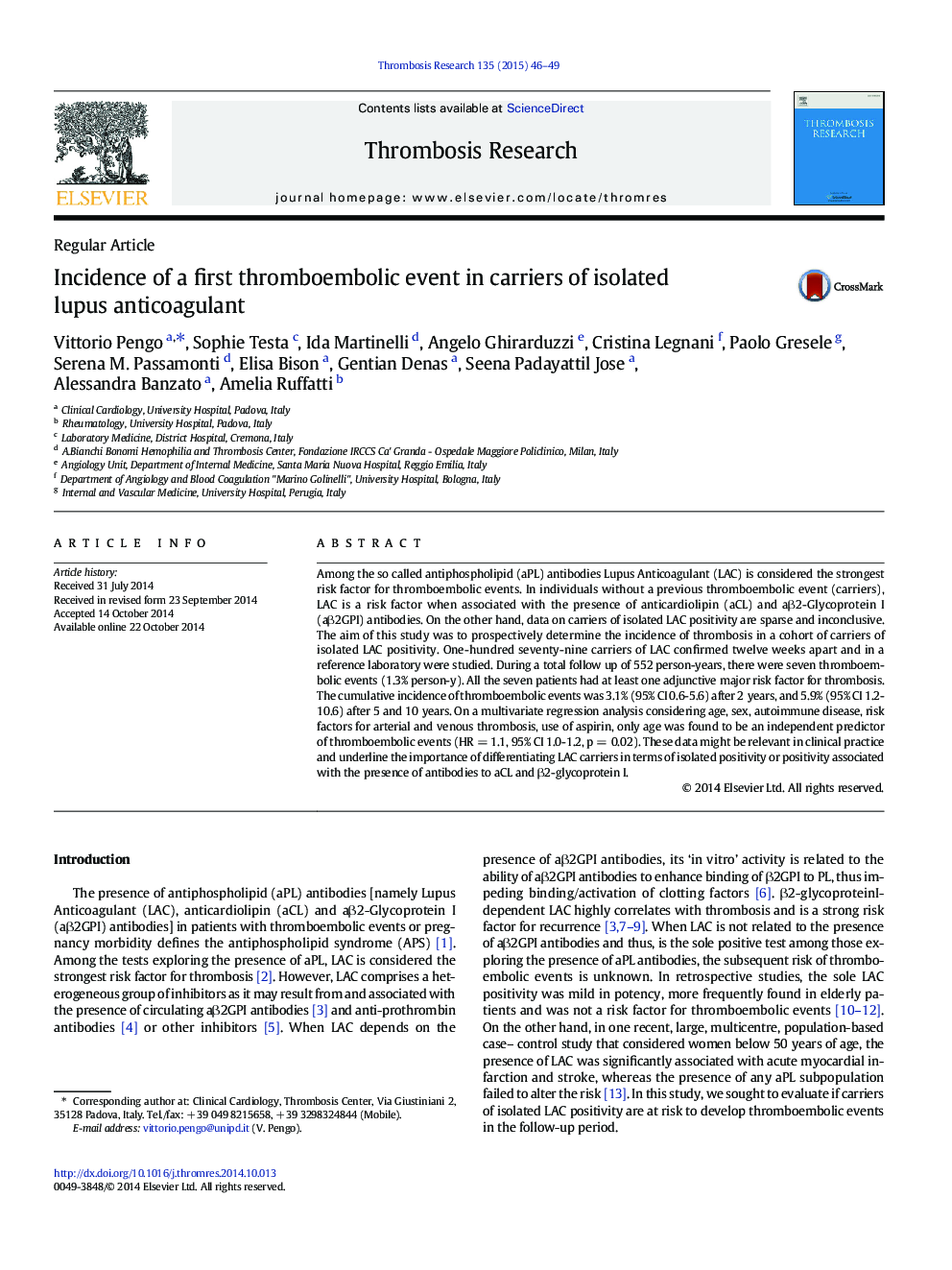| Article ID | Journal | Published Year | Pages | File Type |
|---|---|---|---|---|
| 3027102 | Thrombosis Research | 2015 | 4 Pages |
•Lupus Anicoagulant (LAC) is considered a strong risk factor for thrombosis•This is true when LAC is associated with the presence of aβ2-glycoprotein I (aβ2GPI) and a antibodies•Triple positive (LAC+, aβ2GPI+ and aCL+, same isotype) APS patients and carriers are at high risk of thromboembolic events•Isolated LAC positivity (aβ2GPI- and aCL-) are at low risk of a first thromboembolic event
Among the so called antiphospholipid (aPL) antibodies Lupus Anticoagulant (LAC) is considered the strongest risk factor for thromboembolic events. In individuals without a previous thromboembolic event (carriers), LAC is a risk factor when associated with the presence of anticardiolipin (aCL) and aβ2-Glycoprotein I (aβ2GPI) antibodies. On the other hand, data on carriers of isolated LAC positivity are sparse and inconclusive. The aim of this study was to prospectively determine the incidence of thrombosis in a cohort of carriers of isolated LAC positivity. One-hundred seventy-nine carriers of LAC confirmed twelve weeks apart and in a reference laboratory were studied. During a total follow up of 552 person-years, there were seven thromboembolic events (1.3% person-y). All the seven patients had at least one adjunctive major risk factor for thrombosis. The cumulative incidence of thromboembolic events was 3.1% (95% CI 0.6-5.6) after 2 years, and 5.9% (95% CI 1.2-10.6) after 5 and 10 years. On a multivariate regression analysis considering age, sex, autoimmune disease, risk factors for arterial and venous thrombosis, use of aspirin, only age was found to be an independent predictor of thromboembolic events (HR = 1.1, 95% CI 1.0-1.2, p = 0.02). These data might be relevant in clinical practice and underline the importance of differentiating LAC carriers in terms of isolated positivity or positivity associated with the presence of antibodies to aCL and β2-glycoprotein I.
